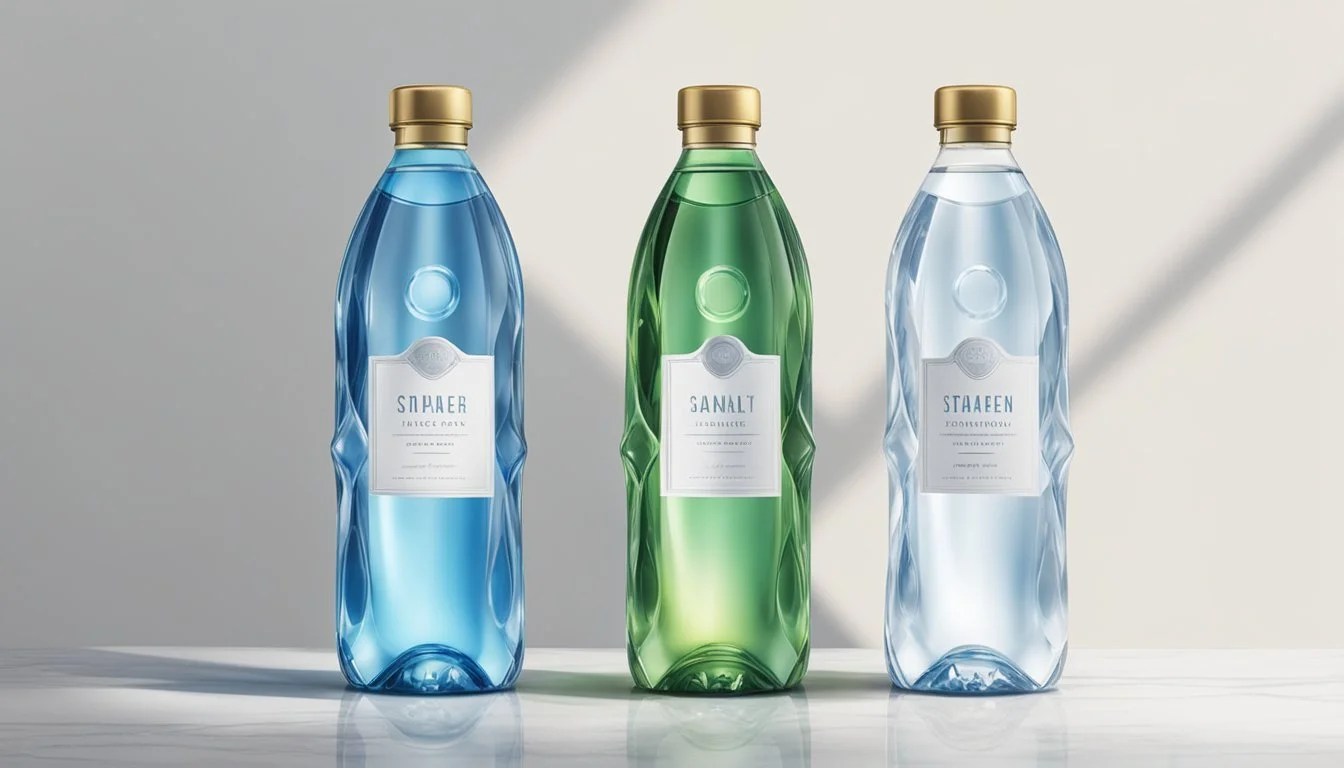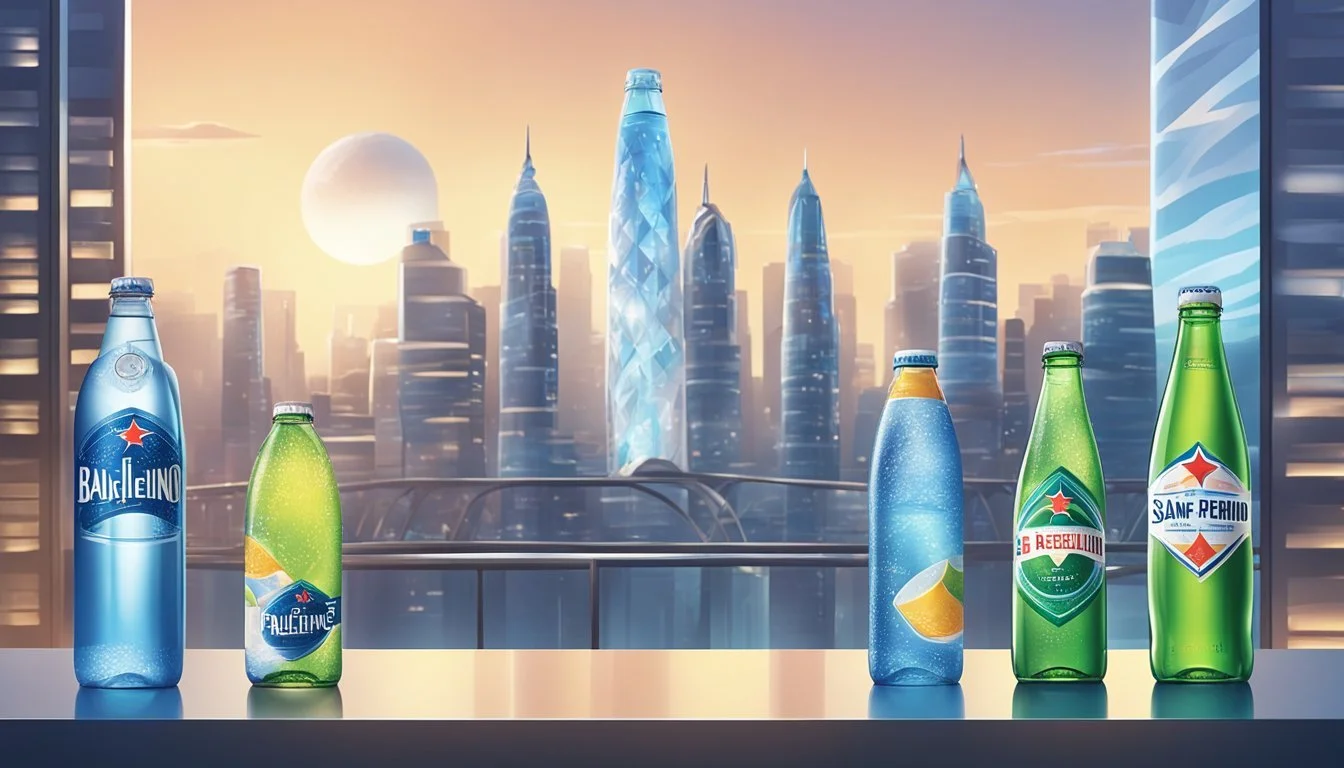Bai vs. San Pellegrino
Comparing the Top Bottled Waters
Choosing the right bottled water can be a straightforward decision for hydration, yet it often transforms into a subtle debate about taste, health benefits, and environmental impact. Bai and San Pellegrino represent two distinctive choices in the bottled water market. Bai offers infused water that is antioxidant-rich and flavored without adding sugar, while San Pellegrino is synonymous with high-end sparkling water, sourced from a spring in Italy and imbued with a light carbonation that provides a distinctive taste and mouthfeel.
Bottled water has ascended in popularity due to convenience and the often-advertised purity over tap water, while sparkling water provides a refreshing alternative for those seeking variety or a fizzy experience without the sugar content of sodas. The market is replete with options that cater to an array of preferences, whether for flat or carbonated hydration solutions. Bai and San Pellegrino, each with its unique offerings, have garnered attention for their distinct flavors and branding.
As consumers evaluate Bai against San Pellegrino, they weigh factors beyond mere thirst-quenching. The discussion encompasses not only the taste profiles but also the health aspects tied to their consumption. With Bai touting its low-calorie profile and antioxidant ingredients and San Pellegrino known for its mineral content, consumers have substantial elements to consider when determining which bottled water best aligns with their preferences and values.
History and Evolution of Bottled Water
The bottled water industry has seen a notable evolution from its humble beginnings. Bottling water began in the early 17th century in the United Kingdom. The commercialization of bottled water, however, spread much later.
The French brand Perrier is known for its naturally carbonated mineral water sourced from springs where volcanic activity once took place. It was first operated in 1863 and became an emblem for sparkling mineral water. In contrast, San Pellegrino, an Italian brand, officially started in 1899. With its first bottles appearing in 1900, the water famously flows from a natural spring in Lombardy, Italy.
Brand Origin Notable Aspect Perrier French Carbonated by natural gases from volcanic activity San Pellegrino Italian Sourced from a renowned spring in Lombardy
The 1970s marked a significant increase in bottled water's popularity in the United States. This marked the rise of brands such as LaCroix, which brought forth more choices in the market, encompassing flavored sparkling water variants.
Bottled water, both still and sparkling, is often sourced from natural springs; this involves a meticulous process where the water is either naturally or artificially carbonated. Brands like San Pellegrino and Perrier represent premium offerings within the sparking segment, often characterized by their unique mineral compositions and trace elements. This distinction in taste and quality defines their reputation in both the Italian and French mineral water markets, catering to a clientele that appreciates the nuances of naturally-sourced bottled water.
Understanding Water Terminology
When exploring the nuances between Bai and San Pellegrino bottled waters, it's pivotal to comprehend the terms that define their contents and effects.
Mineral Content and Health Benefits
Mineral water, such as San Pellegrino, naturally contains minerals like calcium, magnesium, and potassium, essential for body functions. Health benefits often attributed to mineral content include support for bone health and electrolyte balance. San Pellegrino, for instance, boasts a mineral composition beneficial for hydration and taste.
Carbonation and Its Effects
Sparkling water and carbonated water are infused with carbon dioxide to create bubbles. The process gives these beverages a distinctive effervescence. Carbonation can offer a satisfying texture, but it doesn't significantly affect health, although some people may experience bloating or discomfort.
Sparkling water: water that naturally contains carbonation
Seltzer: plain water artificially carbonated
Club soda: water with added minerals for taste after carbonation
Tonic water: carbonated water with added quinine and often sweeteners
Flavor Profiles of Water
Both Bai and San Pellegrino may have added natural flavors such as lime, lemon, or pomegranate to enhance appeal. The inherent taste and flavor of mineral water showcase the source's unique mineral mix, while Bai often includes infused flavors from a variety of fruits like coconut or mango for a distinctive profile.
Acidity, pH Levels, and Water Quality
The pH levels of water, indicating its acidity or alkalinity, are crucial for both taste and water quality. Mineral water tends to have a neutral or slightly alkaline pH, while some processed waters could be more acidic. San Pellegrino, for instance, has a balanced pH that is favored for its smoothness on the palate. Monitoring for contaminants such as PFAS chemicals is essential, and reputable brands adhere to the EPA's guidelines to ensure safety.
Comparative Analysis of Bai and San Pellegrino
This section provides an in-depth comparison between two popular bottled water brands, Bai and San Pellegrino, analyzing their brand ethos, ingredient profiles, health implications, taste and flavor offerings, and cost effectiveness for consumers.
Brand Overview
San Pellegrino is an Italian brand known for its luxury sparkling mineral water. Sourced from San Pellegrino Terme, the water is rich in natural minerals. Bai, on the other hand, is an American brand that offers a variety of antioxidant-infused beverages. Bai highlights the use of non-GMO ingredients and low-calorie sweeteners, catering to health-conscious consumers.
Ingredient Profile Comparison
San Pellegrino:
Minerals: High mineral content, including sulfates and sodium.
Sparkling Water: Carbonation added for effervescence.
Bai:
Natural Minerals: Contains minerals but not as prominent as in San Pellegrino.
Flavored Water: Often includes fruit flavors and added vitamins.
Health Implications of Each Brand
San Pellegrino water's high mineral content can contribute to daily nutritional intake, but its sodium level should be considered by those monitoring sodium intake. Bai offers antioxidants and is low in calories, which may appeal to individuals managing caloric intake.
Taste Test and Flavor Options
San Pellegrino is known for its signature taste: a bright, slightly salty flavor with robust carbonation. It primarily focuses on its original sparkling water but also offers lemon and lime options.
Bai is known for its wide array of flavored water offerings, aimed at those who prefer a sweet, fruity taste. Some of the popular flavors include peach, pear, and passionfruit.
Price Points and Consumer Value
San Pellegrino is generally positioned as a premium brand, and its price reflects that, often being higher than average bottled waters. Bai offers antioxidant-infused beverages at a moderately premium price, which may provide value to health-focused consumers looking for flavorful hydration without high sugar content.
Price Comparison:
Brand Average Price per Bottle San Pellegrino Higher-end pricing Bai Mid-range pricing
Consumers may choose based on budget preference or perceived health and taste benefits associated with each brand.
Water in the Food and Beverage Industry
In the food and beverage industry, the role of bottled water extends beyond simple hydration. Quality waters like Bai and San Pellegrino have distinct mineral profiles and carbonation levels that can complement food and wine experiences, as well as add a nuanced touch to cocktails.
Pairing Water with Food and Wine
When dining, the right bottled water can enhance the flavors of the meal and the wine it's paired with. San Pellegrino, for example, is known for its gentle bubbles and balanced mineral content. Such properties make it a versatile companion to a variety of dishes, from delicate seafood to robust meats. Wine connoisseurs appreciate how a subtly carbonated water like San Pellegrino can cleanse the palate between tastings, allowing the notes of each wine to stand out more clearly.
Ideal Pairings:
Sparkling Water: Pairs well with light and citrus-forward dishes; opt for a lemon or lime undertone to complement seafood.
Still Water: Best with dense or rich foods; a low mineral content won't overwhelm the flavors of the meal.
Wine: Mineral water can balance the acidity in wines, especially white wines with citrus notes such as those from grape varieties like tangerine or orange.
Water in Cocktail Recipes
Bottled waters like Bai, which often contain fruit essences, can provide a subtle flavor base for cocktails. Mixologists may use Bai's flavored water to add a fruit undertone without the need for additional sweeteners or fruit juices, creating refreshing and less calorie-dense beverages. Aesthetically, the clear appearance of these waters maintains the visual integrity of the cocktail, while the infusion of flavors like lime or lemon can subtly enhance the overall taste profile.
Cocktail Tips:
Acid Balance: Use a lemon or lime flavored water to balance the sweetness in cocktails.
Infused Sparkling Water: Incorporates easily into cocktails, adding effervescence and a hint of flavor without overpowering the drink's primary ingredients.
Consumer Trends and Preferences
In the realm of bottled water, consumer choices are increasingly swayed by a preference for health-conscious alternatives and environmentally responsible brands. These preferences are particularly evident among millennials, a demographic consistently driving market trends.
Rising Popularity of Flavored Options
Consumers are gravitating towards flavored seltzer options that provide a wide variety of tastes without compromising on health goals. Flavors like raspberry lime and pineapple have become staples. Bai brands itself on utilizing natural flavors to offer a naturally flavored beverage with zero calories, catering to the demand for flavorful yet healthful drinks.
Market Demand for Healthy Alternatives
Health considerations are paramount for today's consumers, who seek products with no added sugar, low calories, and beneficial additives like caffeine or natural minerals. Bai offers a line-up with an amount of sugar that is low, which is attractive to health-conscious buyers. Additionally, offerings like unflavored seltzer from brands like San Pellegrino, known for its natural minerals, align with the health-oriented preferences of the market.
Environmental Concerns and Brand Perception
The source of water and sourcing practices heavily influence consumer choices, with a push for non-GMO and sustainable options. Consumer reports and reviews often scrutinize the food and beverage industry for their environmental impact. Brands that transparently communicate their commitment to sustainable water sources and responsible packaging gain favor among eco-conscious buyers.
In summary, current consumer trends underscore a demand for products that blend health, taste, and environmental stewardship, with the younger generation at the helm of these preferences.
The Future of Bottled Water
As the bottled water industry evolves, advancements in sustainability and innovation in water flavor and carbonation are becoming key differentiators for brands like Bai and San Pellegrino. Consumers increasingly value eco-friendly practices and diverse, high-quality taste experiences.
Advancements in Sustainability
The bottled water industry is prioritizing sustainable sourcing and packaging to mitigate environmental concerns. Brands are investing in recyclable materials and eco-design to reduce plastic waste. San Pellegrino, for example, has committed itself to high standards of sustainability, leveraging its relationship with natural water sources to ensure a lower environmental impact. Utilization of renewable energy sources during bottling and distribution is another industry focus aimed at reducing carbon emissions.
Sustainable Practices:
Use of biodegradable and recycled packaging materials
Reduction of water waste during bottling processes
Innovation in Water Flavor and Carbonation
Innovation in the bottled water industry extends beyond sustainability, encompassing the development of nuanced flavors and carbonation techniques. Bai emphasizes natural flavors derived from fruits, offering consumers a bright taste without artificial additives. San Pellegrino has been known for its gentle bubbles and subtle taste, often tied to its unique sourcing from mineral springs influenced by volcanic activity. As the industry progresses, there is an increasing emphasis on creating products that combine health benefits with pleasing sensory experiences.
Taste and Texture Enhancements:
Introduction of various levels of carbonation to cater to different preferences
Employment of a variety of natural flavors to introduce new taste profiles








